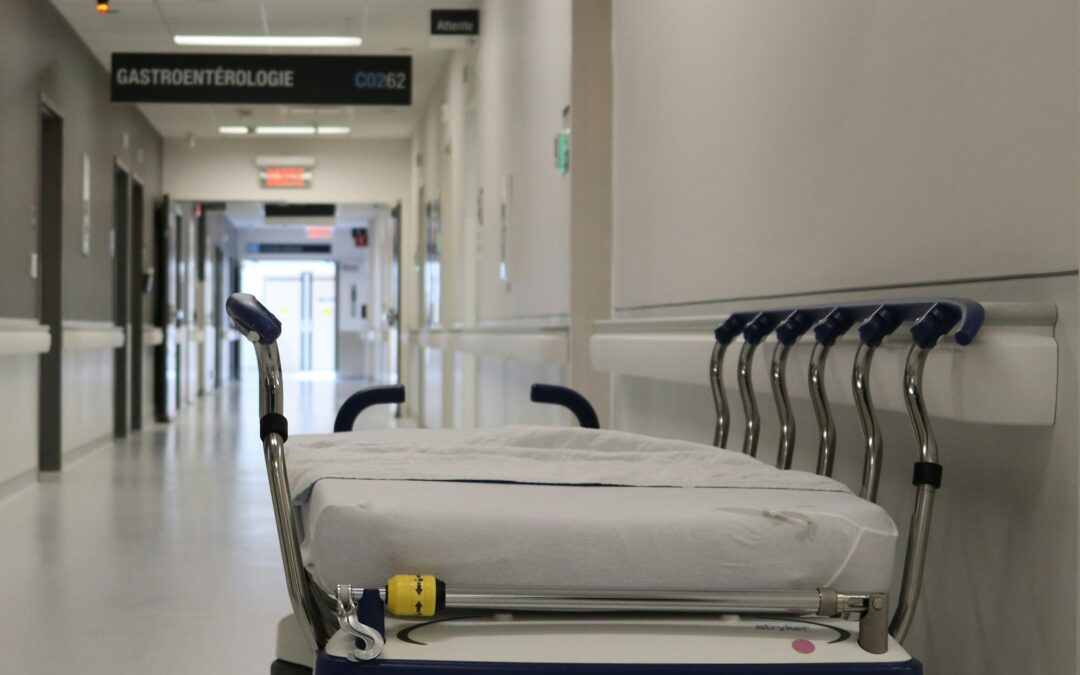
FOR IMMEDIATE RELEASE
NIAGARA FALLS, ON – Ontario’s hospital capacity crisis will worsen in the coming years as government funding will fall short of even maintaining current levels of service, according to a new research report produced by CUPE’s Ontario Council of Hospital Unions (OCHU/CUPE).
Citing latest data on hospital funding, bed capacity, staffing levels, admission times, and other metrics, the report shows declining levels of service and warns that the “worst is yet to come.”
“The data paints a dire picture. There is a massive gap between what Ontarians need and what this government plans to do,” said Michael Hurley, president of OCHU/CUPE. “People are already paying the consequences for the Ontario PC policy of scarcity and it’s only going to get worse: we’ll see longer wait-times, more patients on stretchers in hallways, and fewer staff to provide care.”
The union says that based on the government’s own plans, there is a looming capacity shortfall of 13,800 hospital beds and more than 80,000 staff by 2032.
The report notes that these shortages are driven by underfunding. According to the union, just to maintain current levels of service, Ontario must increase annual hospital funding by $2 billion. For Niagara Health System, that would mean $48 million in additional funding.
“Has the government given up on the hospital crisis?”
Accounting for multiple factors including population aging, the report estimates that Ontario needs about 16,800 additional hospital beds by 2032. However, as repeatedly stated by health minister Sylvia Jones, the government plans to increase capacity by just 3,000 beds – or one-fifth of what is required based on OCHU/CUPE’s estimates.
According to Ontario Health data, the number of patients receiving treatment in hospital hallways, storage closets and other unconventional spaces has already grown by 25 per cent since June 2018.
“In 2018, Ford said he would end hallway healthcare. In 2024, he’s joking about veterinary hospitals handling overflow,” said Hurley. “It begs the question: has this government given up on the hospital crisis? What is their plan to address the suffering of people due to the state of our under-resourced hospitals?”
Ontario currently has 2.23 hospital beds per 1,000 people, which is marginally lower than the 2.25 beds it had just prior to COVID in 2019. “The hospital capacity crisis is also compounded by a lack of new long-term care beds,” notes the report, with a 20 per cent increase in the waitlist since the Ontario PCs came to power in 2018.
Average wait-time has increased over the past 12 months
The latest Ontario Health data from June 2024 shows that the average wait-time for hospital admission is 19 hours, up from 17.8 hours year-on-year and well over the target wait-time of eight hours.
Over the last year, about a quarter of patients admitted to hospital via emergency rooms have been within the target time set by the government – a 75 per cent failure rate.
Rising vacancies and looming staff shortages
Vacancies continue to rise in the hospital sector as 22,330 jobs remain unfilled across the province. The number of vacancies has grown 17 per cent over the past year, and 534 per cent since 2015.
The report shows Ontario has the lowest staffing levels in Canada: to match the rest of the country, the province would need about 34,000 more hospital workers.
Hurley noted that an internal government document (which it tried to keep secret) from May this year showed a looming shortage of more than 80,000 nurses and personal support workers by 2032, with no plan to recruit or retain workers.
He said that instead of taking requisite measures, the government has been “releasing misinformation” about adding staff.
Government officials have been saying the province has “added 30,000 nurses” in the past two years, but Hurley pointed out that figure simply looks at new registrants without accounting for nurses who have deregistered or have stopped practicing. Citing the latest College of Nurses data from August 2024, Hurley said the number of practicing nurses has only increased by 11,263 (63% less than the government’s claim).
“The government is cherry-picking data,” he said. “The most relevant metric here is the number of nurses practicing in the field, and that isn’t keeping pace with patient needs. The reality is the government is doing nothing to retain staff, who are increasingly demoralized in the face of ongoing cutbacks.”
For more information, contact:
Zaid Noorsumar
CUPE Communications
znoorsumar@cupe.ca
647-995-9859
